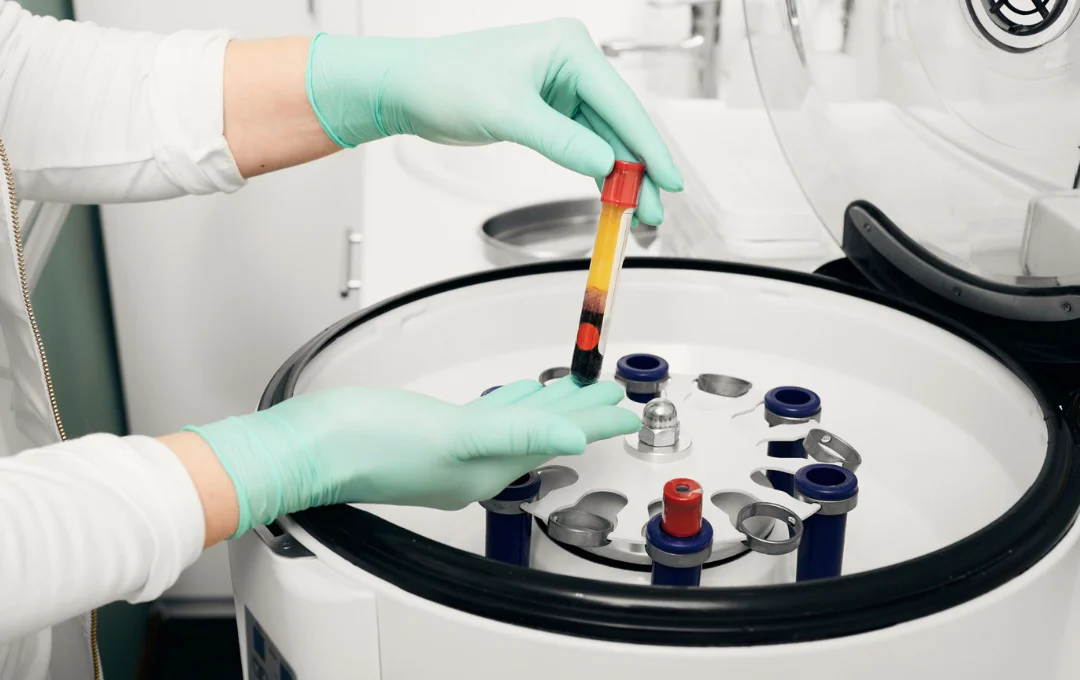Strabismus surgery
Get a Free Consultation
Overview
Strabismus – also called heterotropia or crossed eyes – is the medical name for eye misalignment. Normally, the muscles that control the movement of your eyes make your eyes move in the same direction. If you have strabismus, you may have difficulty controlling the movement of your eyes and keeping them in the same position.
Strabismus may occur temporarily in newborn babies. But when it occurs in children, treatment is a necessity because uncorrected strabismus causes the child to have amblyopia (lazy eye) in the future.
There are different types of treatment for strabismus, depending on your situation. After your ophthalmologist’s examination, you can choose one of these treatments with your doctor’s advice. After all, aesthetic problems aside, it is vital to perceive your environment correctly.
Istanbul Med Assist finds surgeons who provide safe, effective treatment for strabismus surgery for all ages.

Why Is strabismus surgery done?
Six muscles connected to your eyes work together to control the movements of your eyes. When these muscles do not work together, your eyes turn in different directions. Therefore, each of your eyes sends two different images and confuses your brain. Children’s brains can learn to ignore distorted visions.
You may experience strabismus all the time or when you are sick or tired. The vast majority of strabismus cases are caused by a neuromuscular abnormality. Also, medicine is still evolving regarding the control centers in the brain. Therefore, the causes of pediatric strabismus cases are unknown. In rarer cases, there may be a defect in the eye muscle itself.
Strabismus is an inherited disorder. Researchers have found that 30% of children with strabismus have a family member with strabismus. Other disorders associated with strabismus in children are Apert syndrome, cerebral palsy, congenital rubella, hemangioma, retinoblastoma, traumatic brain injury, and premature retinopathy.
In adults, the following diseases can cause strabismus:
- Botulism
- Diabetes
- Glioma
- Graves’ Disease
- Guillain-Barre Syndrome
- Eye injury
- Seafood poisoning
- Paralysis
- Traumatic brain injury
- Loss of vision due to injury or illness
Types of strabismus
There are many types of strabismus. We will talk about the two most common:
- Accommodative Esotropia: It is common in patients with uncorrected hyperopia and with a family history of predisposition to strabismus. Because your eye can not see up close, you must put extra effort into focusing on objects. So this extra effort can cause your eyes to roll inward. Accommodative esotropia causes you to see double, having to close one eye and turn your head when looking at something up close. This type of strabismus begins at an early age and is usually treated with glasses. However, depending on the patient's condition, an eye patch or surgery may also be required.
- Intermittent Exotropia: In this type of strabismus, one eye is fixed on one point while the other turns outward. You may experience symptoms such as double vision, headache, difficulty reading, eyestrain, and closing one eye when looking at distant objects or in bright light. In addition, you may experience no symptoms at all, and others may notice the eye aberration. This type of strabismus can occur at any age.
Symptoms and diagnosis
Usually, babies can focus adequately on small objects within 3-4 months. Babies’ eyes can focus on both near and far objects within 6 months. Infants and young children account for most cases of strabismus. However, strabismus can also occur in older children and adults. In such cases, there is a possibility that strabismus is due to a neurological disorder. In this case, the patient should immediately contact their doctor.
Any baby older than 4 months who show signs of strabismus should have a complete eye exam. The ophthalmologist needs to spend extra time studying the movement and focus of the eyes.
Your doctor will examine the following:
- Patient History: Your doctor evaluates hereditary factors, general health problems, and medications used by the patient.
- Visual Acuity: Reading letters from the eye chart and examining the eye behavior of young children.
- Refraction: Controlling how the eyes focus light with the help of lenses.
- Alignment and focus test.
- The internal structure of the eye by dilating the pupil.
What can you expect?
There are different treatment methods for strabismus:
- Eye muscle surgery: Your eye doctor changes the length and position of your eye muscles. That way, your eyes will line up. In some cases, the doctor may recommend adjustable strabismus surgery. Thus, after surgery, they can change the position of the eye muscles again.
- Glasses or contact lenses: Suitable for patients with refractive disorders. Thanks to the corrective lenses, your eyes spend less effort to focus and can stay in line.
- Prizm Lenses: These special lenses bend the light entering your eye and reduce the movement of your eye to look at objects.
- Orthoptics (Eye Exercises): Effective for some types of strabismus. It is particularly suitable for convergence insufficiency, a kind of exotropia.
- Medication: Your doctor will give you eye drops or ointment. In addition, botulinum toxin types A injection may be beneficial for overworking eye muscles.
- Patching: It is used if strabismus is accompanied by amblyopia (lazy eye). But it is unsuitable for children because they are uncomfortable with the patch.
Risks
In strabismus surgery, anesthesia problems, infection, and potential vision loss are rare. However, the patient, doctor, nurses, and family can reduce these odds by working together. For example, using antibiotics to prevent infection, perfect compliance with pre-operative instructions, rigorous operating room procedures, and promptly informing the doctor of any problems.
Our visual system is quite complex in structure and concerns a large part of our brain. Accordingly, there is a risk that the symptoms of strabismus or the disease itself may not be fully corrected. So you may need additional surgery. Moreover, in parallel with the complexity of the strabismus case, the difficulty of the surgery increases.
Before the procedure
Do not forget to share your past or ongoing health problems with your surgeon in detail before the operation. If you have allergies, bleeding tendencies, and any family history of reactions to anesthesia, be sure to share them with your doctor. If you have any ongoing health problems, it is beneficial to postpone the surgery.
You should not eat in the hours before the strabismus surgery. It is important to enter the surgery on an empty stomach, as there is a risk of vomiting while under anesthesia. Your surgeon will give detailed instructions on when to stop consuming food. If you are going to have surgery in the morning, you should not eat or drink anything from midnight. Especially pediatric patients or adults may cause delay or postpone the surgery with the thought that “one bite will do nothing.” If you have your child operated on, ensure you fully comply with these requirements.
During procedure
The type of anesthesia to be used by the surgeon may vary according to the age and health status of the patient. For children, general anesthesia is suitable. Adults may prefer general anesthesia or local anesthesia with conscious sedation. Your doctor may perform the surgery in the hospital or surgical center. Strabismus surgery does not require you to stay in the hospital.
Your eye muscles are attached to your sclera (eyewall). These muscles are covered by a thin and transparent tissue called the conjunctiva. Your surgeon holds your eyelids open with a lid speculum and makes an incision through the conjunctiva to reach your eye muscles. There is no incision in the skin.
After your surgeon makes the necessary corrections in your eye muscles, he/she sews the muscles to your eyewall. In standard strabismus surgery, the suture knot is permanent, and your doctor cannot adjust after surgery. However, if you are suitable for surgery with adjustable stitches, your doctor may adjust your eye alignment after surgery. The suitability for this surgery means the patient can fully follow the doctor’s instructions during an adjustment. Otherwise, standard strabismus surgery is a more suitable option.
After strabismus surgery
After surgery, it is normal to develop redness in the white areas of your eyes. It can take weeks or months for the redness to go away. You feel soreness when you move your eyes. However, this is temporary and subsides in the days following surgery. Your surgeon applies antibiotic drops or ointment to your eye after surgery. Depending on your situation, your doctor may prescribe drops or ointments for you to use after the strabismus surgery.
In addition, it is very normal for you to experience minor discomfort, bruising, and swelling. Sometimes you may see pink or reddish tears or redness in your mucus. All these are temporary discomforts that occur within a few days following strabismus surgery.
Results
For adult patients, the most important benefit of strabismus surgery is the restoration of vision and the disappearance of double vision. Your eyes will be aligned, and your vision problems will improve. It is needless to stress the importance of this.
Your child will have excellent vision and depth perception if the problem is caught in time and treated properly. Also, the risk of vision loss is eliminated in the long run.
Finally, you can eliminate this discomfort that complicates your or your child’s life, spoiling your windows to the world, and you can perceive the world as it is.
Join to our newsletter

Authorized by the Ministry of Health and Tourism in Turkey








